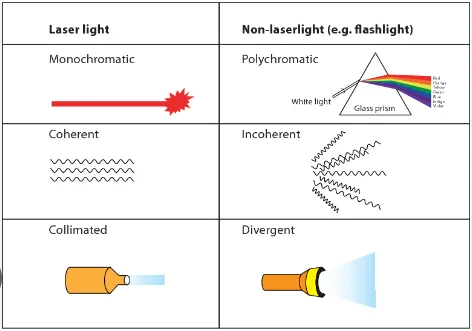LASER, which stands for Light Amplification by Stimulated Emission of Radiation, is a technology that generates a highly focused and coherent beam of light. It relies on quantum mechanics and optics, and this technology is known for producing light that is both monochromatic and coherent. Lasers have numerous applications across various fields, including communication, medicine, industry, and entertainment.
Understanding LASER Technology
Fundamentals of LASER Technology
- It’s a technology that utilizes the principles of quantum mechanics and optics to produce a highly focused and coherent beam of light.
- Here are key aspects of LASER technology:
-
- The fundamental principle behind LASER technology is the process of stimulated emission of photons.
- Atoms or molecules are stimulated to emit photons (light particles) with the same energy, phase, and direction when they are exposed to external energy.
Components of a LASER
- Gain Medium: This is the material (solid, liquid, or gas) that amplifies light through the process of stimulated emission.
- Excitation Source: It provides the energy required to excite the atoms or molecules in the gain medium.
- Optical Cavity/Resonator: It consists of mirrors at both ends, allowing the light to bounce back and forth, amplifying it further.
- Output Coupler: It allows a portion of the amplified light to exit the cavity, forming the LASER beam.
Coherence and Monochromaticity
- Coherence: LASER light is characterized by its coherence, which means that the waves are in phase with each other. This coherence leads to a highly focused and narrow beam.
- Monochromatic: LASER light is also monochromatic, meaning it consists of a single color or wavelength.
Applications
- Communication: LASERs are used in fiber-optic communication systems for data transmission.
- Surgery: In medical applications, LASERs are used for precision surgeries, such as eye surgeries and skin treatments.
- Material Processing: LASERs are employed for cutting, welding, and engraving various materials in industries.
- Research: LASERs play a crucial role in scientific research, including spectroscopy, microscopy, and particle acceleration.
- Entertainment: LASERs are used in various entertainment applications, such as laser light shows.
Types of LASERs
- Semiconductor LASERs: Commonly used in consumer electronics, including DVD players and laser pointers.

- Gas LASERs: Helium-neon (HeNe) LASERs are a common example used in educational and research settings.
- Solid-State LASERs: Utilize solid materials such as crystals or glass as the gain medium. Nd:YAG and Ruby LASERs fall into this category.
- Fiber LASERs: Use an optical fiber as the gain medium, commonly employed in telecommunications and material processing.
Safety Considerations
- LASERs can be hazardous to the eyes and skin. Protective measures, such as safety goggles, are essential when working with LASERs.
- Different classes of LASERs are defined based on their potential for harm, and safety regulations are in place to mitigate risks.
Conclusion
LASER technology, with its precise and powerful light beams, has revolutionized many industries and scientific research areas. From enabling high-speed data transmission in communication to performing delicate surgeries and cutting materials in manufacturing, LASERs are indispensable. Understanding the principles and safety measures of LASERs ensures their effective and safe use. As technology advances, LASER applications will continue to expand, offering new possibilities and innovations.
![]() June 11, 2024
June 11, 2024
![]() 2998
2998
![]() 0
0
